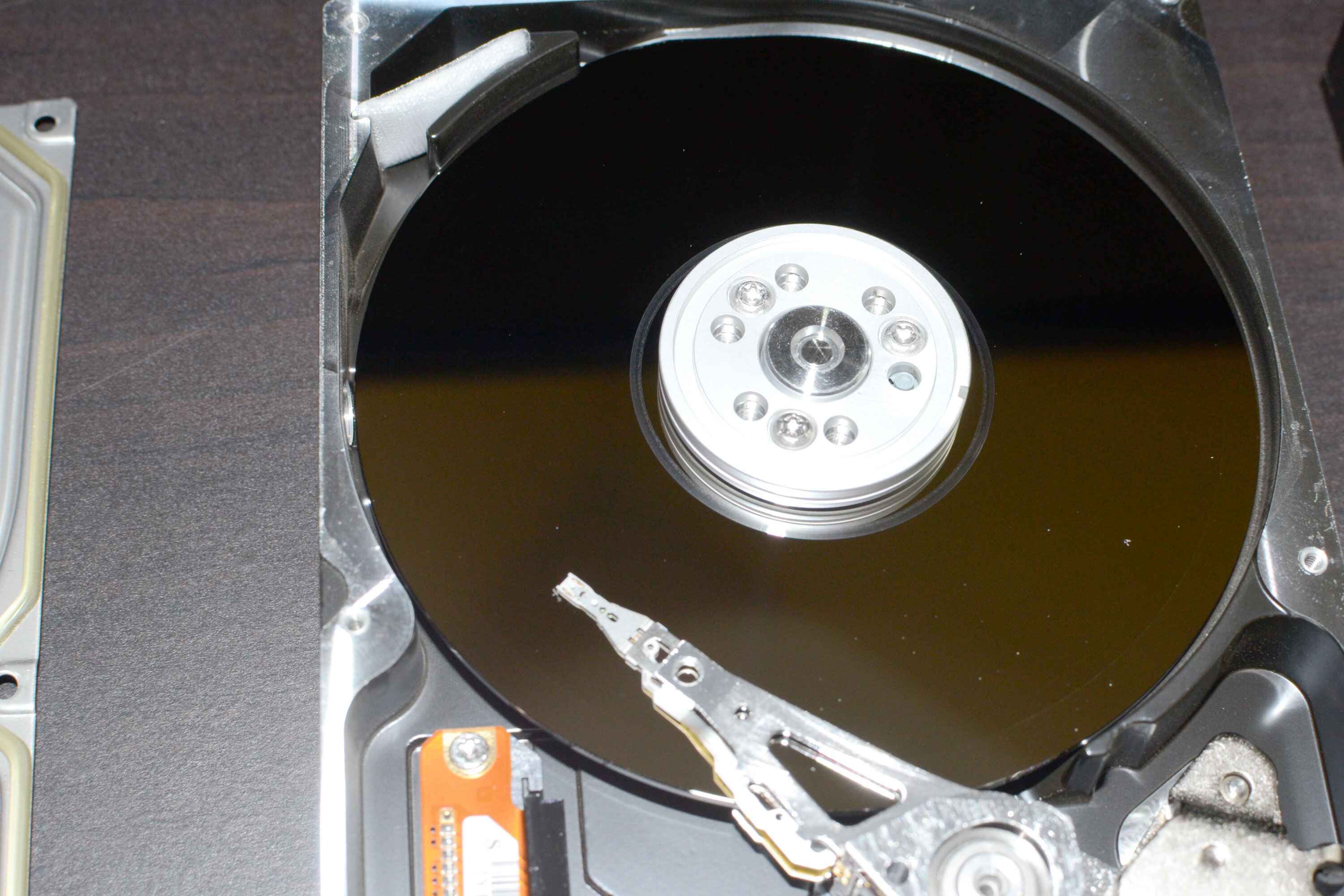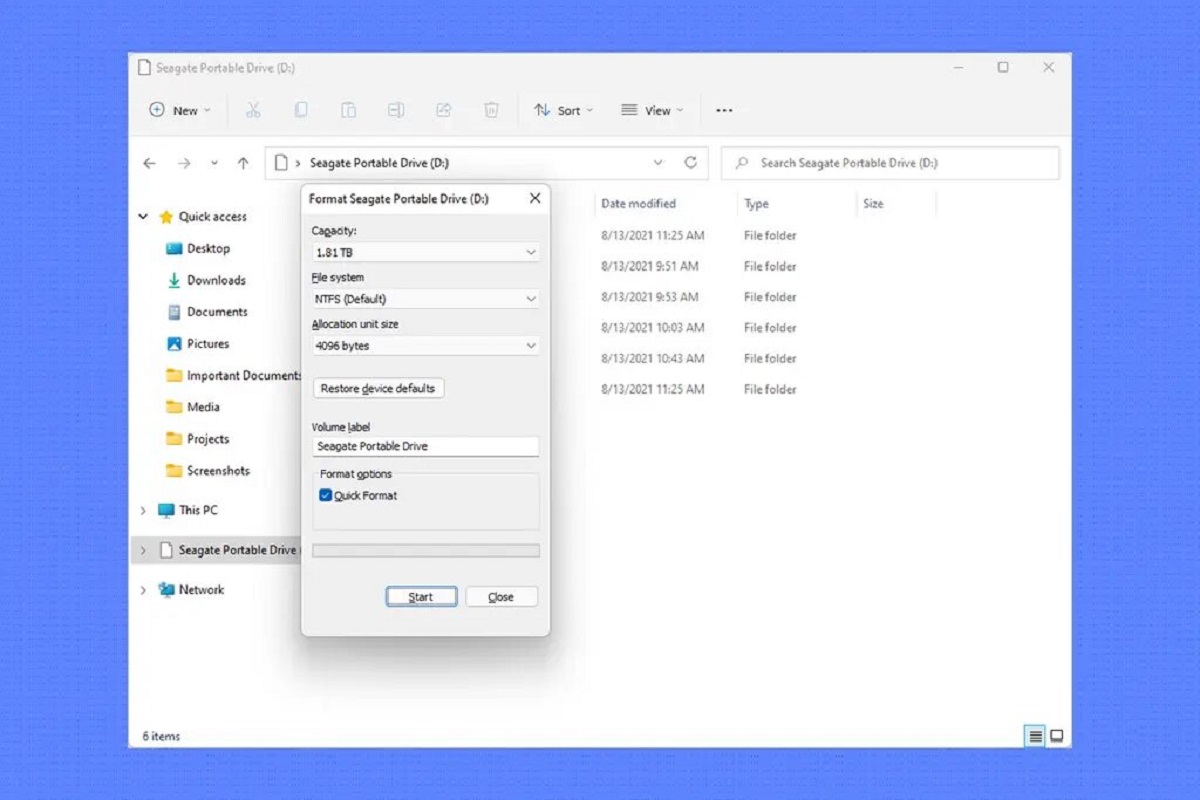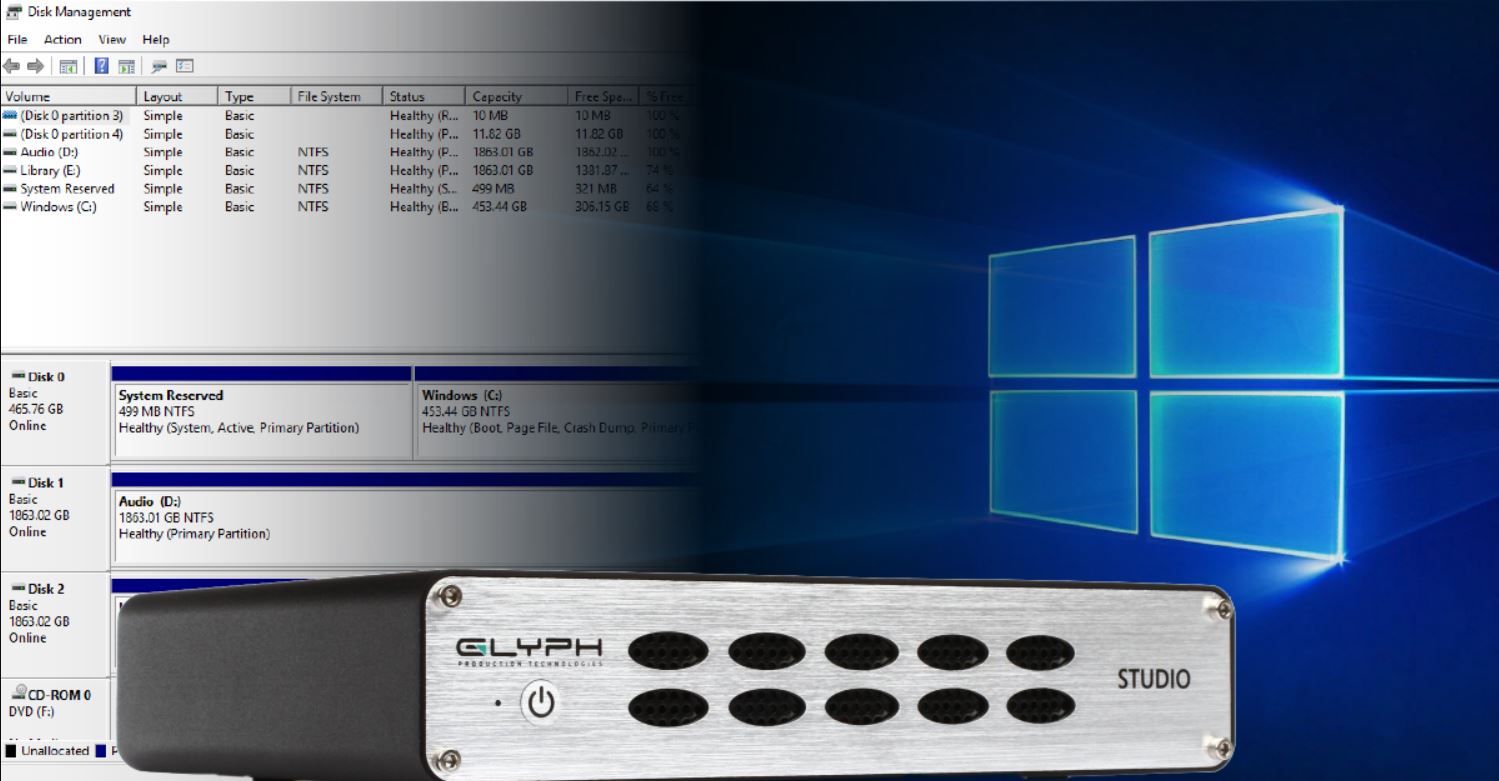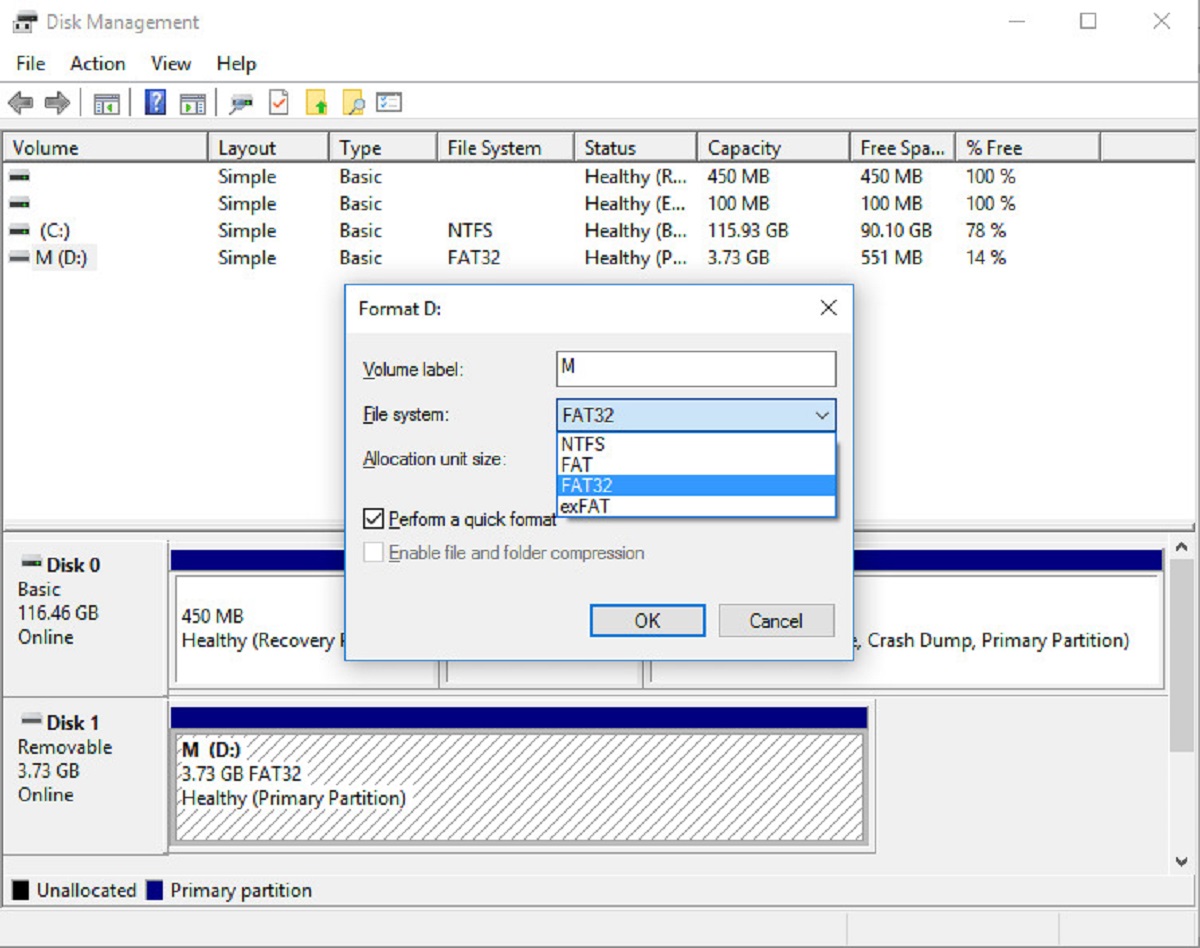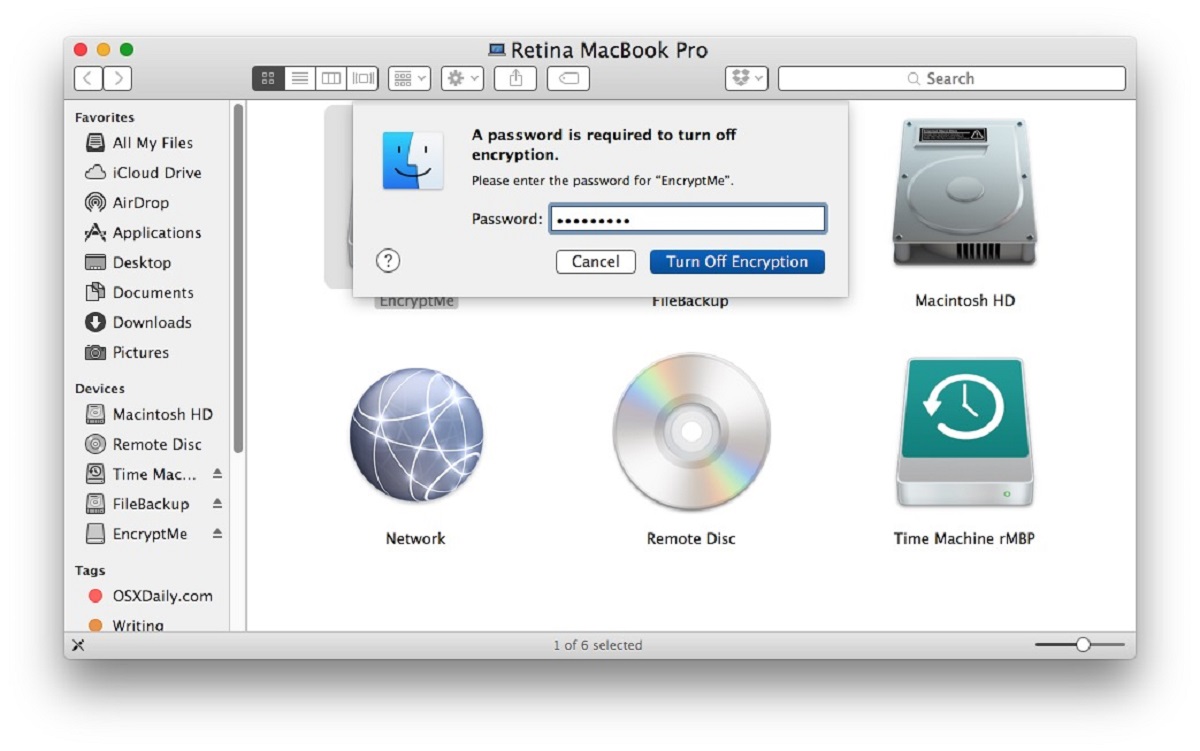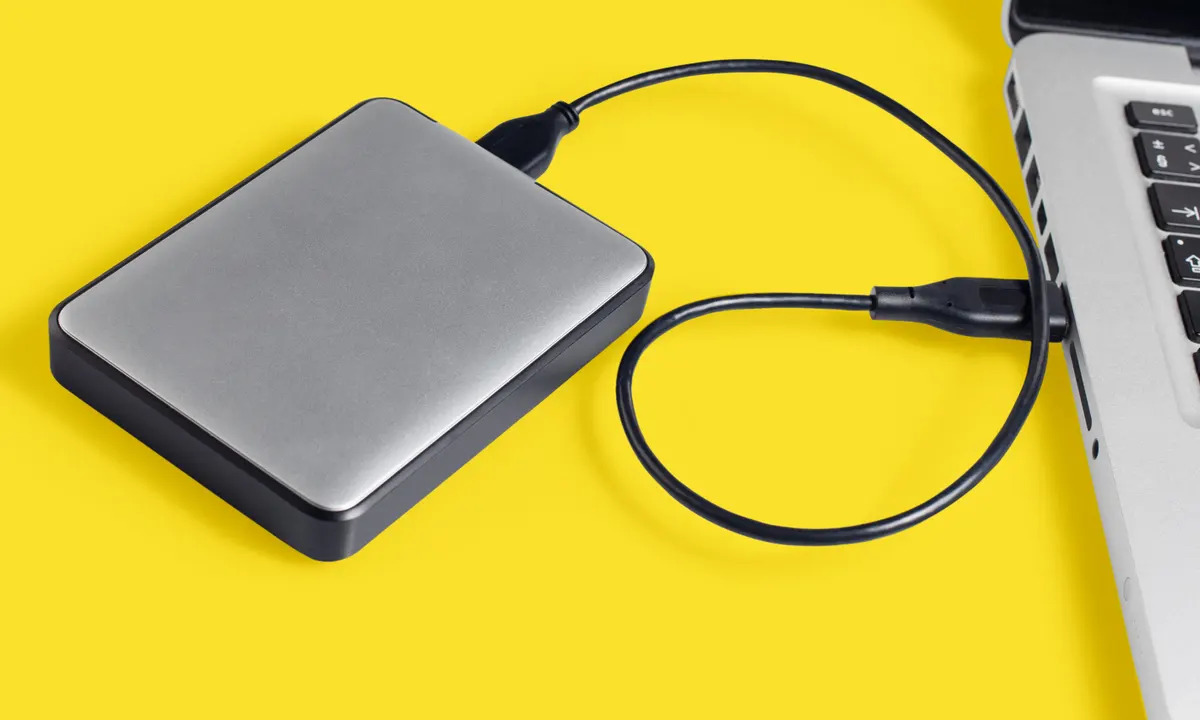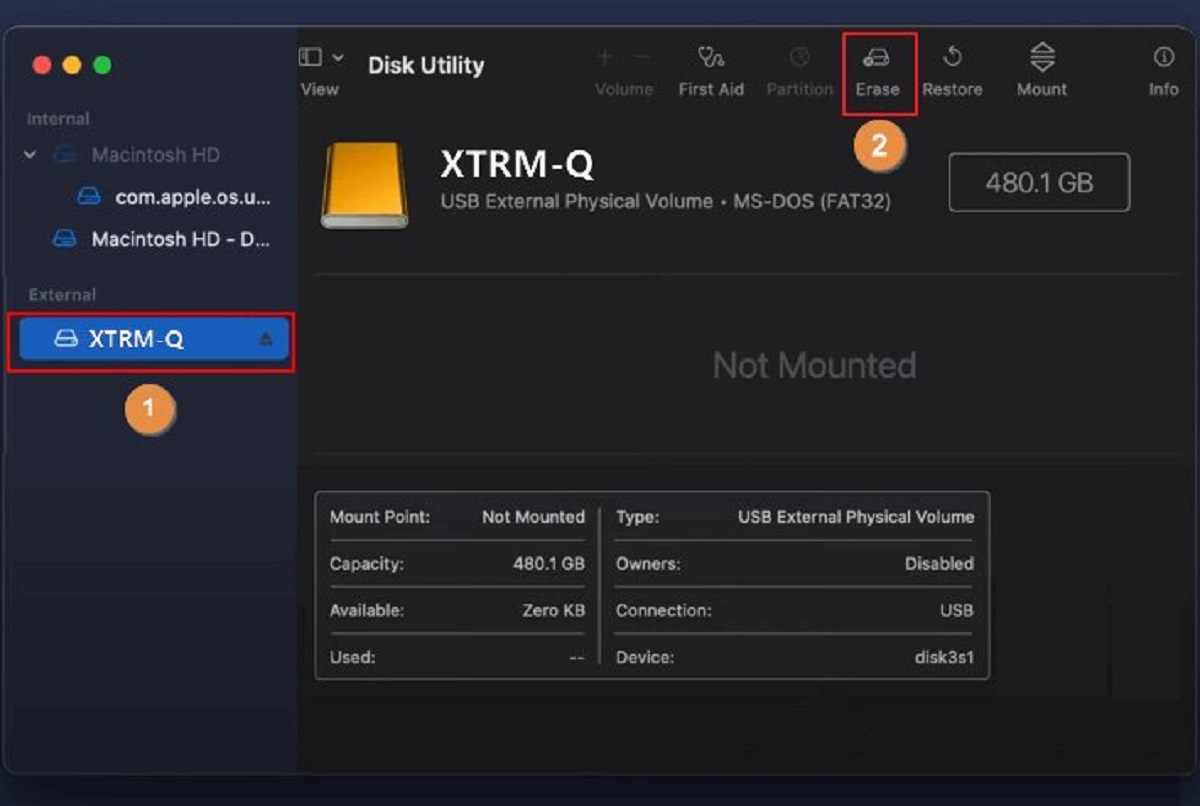Introduction
Welcome to the world of hard disk drives! These incredible devices are essential components in computer systems and serve as the primary storage solution for all your data. However, before you can start storing and accessing files, you’ll need to initialize your hard disk drive.
Hard disk drive initialization is the process of preparing a new or used hard disk drive for use in your computer system. It involves setting up the necessary structures and configurations to make the drive recognizable and usable by your operating system.
Now, you might be wondering, why do you need to initialize a hard disk drive in the first place? Well, when you purchase a new hard disk drive, it comes completely blank, without any partitions or file systems. Initializing the drive is necessary to create these partitions and file systems, which are essential for storing and organizing your data.
If you’re using a previously used hard disk drive, you may also need to initialize it if it was previously formatted using a different file system or if you want to start fresh with a completely clean drive.
In this guide, we will walk you through the step-by-step process of initializing a hard disk drive. Whether you’re upgrading your old drive or setting up a new one, this guide will ensure that you’re able to successfully initialize your hard disk drive and get it ready for use.
Before we proceed, let’s go over the tools you will need to initialize your hard disk drive.
What is hard disk drive initialization?
Hard disk drive initialization is the process of preparing a new or used hard disk drive for use in a computer system. When you initialize a hard disk drive, you are essentially setting it up to be recognized and used by an operating system.
During the initialization process, the hard disk drive is formatted and partitioned. Formatting involves creating a file system on the drive, which determines how data is stored and accessed. Partitioning, on the other hand, involves dividing the drive into separate sections or partitions, each with its own file system and allocation of storage space.
There are two main types of initialization for hard disk drives: MBR (Master Boot Record) and GPT (GUID Partition Table). MBR has been the standard for many years and is compatible with most older systems, while GPT is a newer standard that supports larger drives and more partitions.
During the initialization process, the hard disk drive is assigned a unique identifier known as a disk signature. This identifier allows the operating system to recognize and differentiate between multiple hard disk drives connected to the computer.
Initializing a hard disk drive is a crucial step in the setup process, as it lays the foundation for storing and accessing data on the drive. Without proper initialization, the computer may not be able to detect the hard disk drive or use it effectively.
It’s important to note that initializing a hard disk drive will erase all existing data on the drive. Therefore, it’s essential to back up any important files before proceeding with the initialization process.
In the next sections, we will guide you through the necessary steps to initialize a hard disk drive and get it ready for use in your computer system.
Why do you need to initialize a hard disk drive?
Initializing a hard disk drive is a necessary step before you can start using it for storing and accessing data. Here are a few reasons why you need to initialize a hard disk drive:
1. Create File System:
When you initialize a hard disk drive, you create a file system on it. The file system determines how data is organized, stored, and accessed on the drive. Without a file system, the operating system wouldn’t know how to interact with the drive and wouldn’t be able to save or retrieve any data.
2. Partition the Drive:
During the initialization process, you partition the hard disk drive into logical sections. Each partition acts as a separate storage unit and can have its own file system. Partitioning allows you to organize and manage your data more efficiently. For example, you can have separate partitions for the operating system, applications, and personal files, making it easier to manage and back up your data.
3. Compatibility:
By initializing a hard disk drive, you ensure compatibility with your operating system. Different operating systems may require specific file systems or partitioning schemes. By initializing the drive to match the requirements of your operating system, you avoid any compatibility issues and ensure smooth functioning.
4. Prepare New Drives:
If you’re installing a new hard disk drive or replacing an existing one, initialization is necessary to prepare the drive for use. New drives come without any partitions or file systems, so initializing them is vital to make them usable and ready to store data.
5. Resetting Used Drives:
If you’re using a previously used hard disk drive, you might need to initialize it to start fresh. This is especially important if the drive was previously formatted using a different file system or if you want to erase all existing data. By initializing the drive, you can wipe out the previous configurations and start with a clean slate.
Overall, initializing a hard disk drive is an essential step in the setup process. It allows your operating system to recognize and utilize the drive for storing and accessing data in a structured manner. By following the steps outlined in the next sections, you’ll be able to initialize your hard disk drive and make it ready for use in your computer system.
What you will need for hard disk drive initialization
Before you can proceed with the hard disk drive initialization process, there are a few essential things you will need. Ensure you have the following items ready:
1. Hard Disk Drive:
The first and obvious requirement is the hard disk drive itself. Whether you are setting up a new drive or working with a used one, make sure you have it on hand. Ensure that the drive is compatible with your computer system and meets the necessary specifications.
2. Computer and Operating System:
You will need a computer to connect the hard disk drive to and perform the initialization process. Make sure you have a computer system that meets the minimum requirements and is compatible with your chosen operating system.
3. Cables and Connections:
Ensure that you have the necessary cables and connections to connect the hard disk drive to your computer. Most hard disk drives use SATA (Serial ATA) or IDE (Integrated Drive Electronics) cables for connectivity. Verify the type of connection required for your drive and have the appropriate cables ready.
4. Power Supply:
Make sure you have a stable power supply to provide power to the hard disk drive during the initialization process. Verify that your computer’s power supply is adequate to support the additional drive, or use an external power source if required.
5. Administrative Privileges:
To perform the initialization process, you will need administrative privileges on your computer. Ensure that you have the necessary login credentials and permissions to make changes to the system.
6. Disk Management Software:
You will also need access to disk management software on your computer. Most operating systems, including Windows, macOS, and Linux, have built-in disk management tools. Verify that your chosen operating system has a disk management utility installed or download a reliable third-party disk management software.
By having these items in place, you will be fully equipped to proceed with the hard disk drive initialization process. In the next sections, we will guide you through the step-by-step process of connecting the drive and performing the necessary actions to initialize it successfully.
Step 1: Connect the hard disk drive to your computer
The first step in initializing a hard disk drive is to physically connect it to your computer. Follow these steps to ensure a proper connection:
1. Ensure Power Off and Safety Precautions:
Before working with any hardware components, make sure your computer is powered off and unplugged. Additionally, use proper safety precautions, such as wearing an anti-static wristband or frequently grounding yourself by touching a metal object, to prevent any potential damage to the drive.
2. Identify the Drive Connectors:
Locate the connectors on your hard disk drive. Most modern hard disk drives use either SATA (Serial ATA) or IDE (Integrated Drive Electronics) connectors. SATA connectors are smaller and have thin cables, while IDE connectors are wider and use flat ribbon cables.
3. Open the Computer Case:
If you are installing an internal hard disk drive, you may need to open the computer case to access the drive bays. Refer to your computer’s user manual or manufacturer’s instructions for guidance on opening the case safely.
4. Choose an Available Drive Bay:
Select an available drive bay to install your hard disk drive. Slide the drive into the bay and align the screw holes on the sides of the drive with the corresponding holes in the bay.
5. Secure the Drive:
Once aligned, use screws or other mounting hardware provided with your computer or drive to secure the hard disk drive in place. Make sure that the drive is firmly attached and does not move or wobble within the bay.
6. Connect Data and Power Cables:
Connect the appropriate data and power cables to the connectors on the hard disk drive. SATA drives use SATA cables for both data and power connections, while IDE drives may require separate cables for data and power.
7. Connect to the Motherboard and Power Supply:
If you are installing an internal hard disk drive, locate the corresponding SATA or IDE port on your computer’s motherboard and connect the data cable. Also, connect the power cable to the drive and to an available power supply connector.
8. Close the Computer Case:
After all the connections are secure, close the computer case and ensure that it is properly fastened.
Congratulations! You have successfully connected the hard disk drive to your computer. In the next steps, we will guide you through the process of initializing and configuring the drive using the disk management tool.
Step 2: Open Disk Management
After connecting the hard disk drive to your computer, the next step is to open the Disk Management tool. Disk Management is a built-in utility in most operating systems that allows you to manage and configure disk drives. Follow these steps to open Disk Management:
1. Open Start Menu:
In Windows, click on the “Start” button located at the bottom left corner of your screen. This will open the Start menu.
2. Search for Disk Management:
In the search bar within the Start menu, type “Disk Management”. As you type, you should see “Create and format hard disk partitions” or similar options appear in the search results.
3. Open Disk Management:
Click on the “Create and format hard disk partitions” or similar option from the search results. This will open the Disk Management tool.
4. Administrative Privileges:
Depending on your operating system and user account, you may need to provide administrative privileges to open Disk Management. If prompted, enter your administrator password or grant the necessary permissions to proceed.
5. Disk Management Window:
Once opened, the Disk Management window will display a list of all the connected drives, including the newly installed hard disk drive. The drives will be listed in the bottom pane of the Disk Management window.
It’s important to note that the Disk Management tool may take a few moments to load, especially if there are multiple drives connected to your computer.
With the Disk Management tool open, you are now ready to proceed to the next steps of identifying, initializing, and configuring the newly connected hard disk drive. In the following sections, we will guide you through these steps to ensure a successful initialization process.
Step 3: Identify the new hard disk drive
After opening the Disk Management tool, the next step in initializing the hard disk drive is to identify it correctly. Follow these steps to identify the new hard disk drive:
1. Locate the new drive:
In the Disk Management window, you will see a list of all the connected drives. Look for the drive that represents the new hard disk drive you just connected. The drives will be labeled with their assigned drive letters, such as “C:”, “D:”, etc. The new drive may appear as “Unknown” or “Not initialized”.
2. Check the drive details:
Right-click on the new drive and select “Properties” or a similar option from the context menu. This will open a properties window that provides information about the drive, such as its capacity, file system, and device status. Take note of this information to ensure you are working with the correct drive.
3. Verify the drive capacity:
Make sure that the capacity displayed for the new hard disk drive matches the expected size. This helps you confirm that you are working with the correct drive and avoid potential errors when initializing it.
4. Ignore other drives:
It’s important to distinguish the new hard disk drive from any other drives listed in the Disk Management window. Make sure not to confuse it with other internal or external drives to avoid accidentally initializing or modifying the wrong drive.
By correctly identifying the new hard disk drive in the Disk Management tool, you can ensure that you are working with the right drive during the initialization process. Once you have confirmed the correct drive, you are ready to proceed to the next step of initializing the hard disk drive.
Step 4: Initialize the hard disk drive
Once you have identified the new hard disk drive in the Disk Management tool, the next step is to initialize it. Initializing the drive prepares it for use by creating a partition table and setting up the necessary structures for data storage. Follow these steps to initialize the hard disk drive:
1. Right-click on the new drive:
In the Disk Management window, right-click on the new hard disk drive that you want to initialize. This will open a context menu with various options.
2. Select “Initialize Disk”:
From the context menu, select the option that says “Initialize Disk” or a similar option. This will open a dialog box that allows you to choose the initialization method.
3. Choose the initialization method:
In the initialization dialog box, you will be prompted to select the partition style for the disk: MBR (Master Boot Record) or GPT (GUID Partition Table). Choose the appropriate option based on your needs and system compatibility.
MBR is the legacy partition style and is compatible with most older systems. It supports up to four primary partitions or three primary partitions and an extended partition with logical drives within it.
GPT is the newer partition style and is recommended for modern systems. It supports larger drives and can have more than four primary partitions. It also includes built-in redundancy for improved data integrity.
4. Confirm and Start the Initialization:
After choosing the partition style, confirm your selection and click on the “OK” or “Initialize” button to start the initialization process. This will begin the process of initializing the hard disk drive.
5. Wait for Initialization Completion:
The initialization process may take a few seconds or minutes, depending on the size of the hard disk drive. You can monitor the progress in the Disk Management window. Once the process is complete, the new drive should appear as “Online” and display the allocated space.
By following these steps, you can successfully initialize the new hard disk drive using the Disk Management tool. In the next steps, we will guide you through partitioning and formatting the drive to make it fully functional and ready for use.
Step 5: Partition the hard disk drive
After initializing the hard disk drive, the next step is to partition it. Partitioning involves dividing the drive into separate sections, each with its own file system and allocated storage space. This allows you to organize and manage your data efficiently. Follow these steps to partition the hard disk drive:
1. Right-click on the initialized drive:
In the Disk Management window, right-click on the initialized hard disk drive that you want to partition. This will open a context menu with various options.
2. Select “New Simple Volume”:
From the context menu, select the option that says “New Simple Volume” or a similar option. This will open the New Simple Volume Wizard.
3. Follow the New Simple Volume Wizard:
The New Simple Volume Wizard will guide you through the process of creating a partition on the hard disk drive. Follow the on-screen instructions and provide the necessary information such as the volume size, drive letter, and file system format.
4. Choose the volume size:
In the New Simple Volume Wizard, specify the size of the partition you want to create. If you want to use the entire drive as a single partition, accept the default maximum size. Alternatively, you can allocate a specific size for the partition according to your needs.
5. Assign a drive letter:
Next, you will be prompted to assign a drive letter to the newly created partition. Choose an available drive letter from the list or accept the default assignment.
6. Format the partition:
In the New Simple Volume Wizard, select the desired file system format for the partition. The file system determines how data is organized and accessed on the partition. Popular file system formats include NTFS, FAT32, and exFAT. Choose the appropriate format based on your requirements.
7. Complete the process:
Once you have specified the volume size, assigned a drive letter, and selected the file system format, review the settings in the wizard and click on the “Finish” button to complete the partitioning process.
The Disk Management tool will now create the partition with the specified settings on the hard disk drive. This partition will be recognized as a separate storage unit with its own drive letter. You can repeat these steps to create multiple partitions on the drive if desired.
By partitioning the hard disk drive, you can organize your data and allocate storage space effectively. In the next step, we will guide you through the process of formatting the newly created partition.
Step 6: Format the hard disk drive
After partitioning the hard disk drive, the next step is to format the newly created partition. Formatting the drive involves preparing it with a file system, which determines how data is organized and accessed. Follow these steps to format the hard disk drive:
1. Right-click on the partition:
In the Disk Management window, right-click on the partition that you want to format. This will open a context menu with various options.
2. Select “Format”:
From the context menu, select the option that says “Format” or a similar option. This will open the Format dialog box.
3. Choose the file system format:
In the Format dialog box, choose the desired file system format for the partition. The available options may vary depending on your operating system, but popular choices include NTFS, FAT32, and exFAT. Select the format that best suits your needs.
4. Set the volume label (optional):
Optionally, you can set a volume label or name for the partition. The volume label is a user-defined name that makes it easier to identify the partition. Enter a descriptive name for the partition or accept the default value provided by the system.
5. Select other formatting options:
Depending on the formatting dialog box, you may have additional options to customize the formatting process. These options might include cluster size, quick format, and enable file and folder compression. Adjust these settings according to your preferences or leave them at their default values.
6. Confirm and start the formatting process:
Double-check the formatting settings in the dialog box to ensure they are correct. Once you are satisfied, click on the “OK” or “Format” button to start the formatting process.
7. Wait for formatting completion:
The formatting process may take a few minutes, depending on the size of the partition. You can monitor the progress in the Disk Management window or in a progress bar within the formatting dialog box. Once the process is complete, the newly formatted partition will be ready for use.
By formatting the hard disk drive, you prepare the partition for storing and accessing data. The partition will be recognized as a formatted volume with the specified file system format. Now, you can start using the partition to store your files and data.
Step 7: Assign a drive letter and label
After formatting the hard disk drive partition, the final step in the initialization process is to assign a drive letter and label to the newly formatted partition. The drive letter serves as a unique identifier for the partition, while the label provides a user-defined name to easily recognize and access the partition. Follow these steps to assign a drive letter and label:
1. Right-click on the partition:
In the Disk Management window, locate the newly formatted partition, right-click on it, and select the “Change Drive Letter and Paths” option from the context menu.
2. Click “Add” or “Change”:
In the Drive Letter and Paths dialog box, click on the “Add” or “Change” button to proceed with assigning a new drive letter or changing the existing one.
3. Choose a drive letter:
In the Assign Drive Letter or Change Drive Letter dialog box, select an available drive letter from the drop-down menu. Choose a letter that is not already assigned to another drive to avoid conflicts. Click on the “OK” button to confirm the selection.
4. Set a volume label:
Optionally, you can assign a volume label or name to the partition. The volume label is a user-defined name that makes it easier to identify and recognize the partition. To set a label, go back to the Disk Management window, right-click on the partition, select “Properties,” and navigate to the “General” tab. Enter a descriptive name for the label or accept the default value provided by the system.
5. Verify the assigned drive letter and label:
Return to the Disk Management window and ensure that the partition now displays the assigned drive letter and label. The drive letter will appear next to the partition name, indicating its identification. The label, if set, will also be visible next to the drive letter.
6. Access the partition:
Now that you have assigned a drive letter and optionally set a label for the partition, you can access it like any other drive or partition on your computer. The partition will be available to store files and data, and you can easily navigate to it using File Explorer or any file management tool.
With the drive letter and label assigned, you have successfully completed the initialization process for the hard disk drive. The partition is now ready for use, and you can start storing, accessing, and managing your files on it.
Conclusion
Initializing a hard disk drive is a crucial step in preparing it for use in a computer system. By following the step-by-step process outlined in this guide, you can successfully initialize a new or used hard disk drive and make it ready for storing and accessing your data.
Starting with connecting the hard disk drive to your computer, you learned how to open the Disk Management tool, identify the new drive, and then proceed with initializing it. The initialization process involved choosing the appropriate partition style, such as MBR or GPT, and confirming the settings to initialize the drive.
After successful initialization, you moved on to partitioning the hard disk drive, dividing it into separate sections to organize and manage your data more effectively. Then, you formatted the partition, setting up the necessary file system for data storage and access.
The final step involved assigning a drive letter and label to the newly formatted partition, making it easily recognizable and accessible on your computer system.
By carefully following these steps, you ensured that your hard disk drive is properly initialized, partitioned, and formatted, ready to serve as a reliable storage solution for your files and data.
Remember, when working with a hard disk drive, it is essential to back up important data to prevent any loss during the initialization process. Additionally, ensure that you have administrative privileges and take necessary safety precautions when working with hardware components.
Now that you have successfully initialized your hard disk drive, you can start taking advantage of its storage capacity and enjoy seamless data access and organization for your computing needs.







